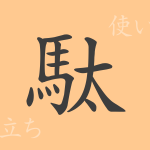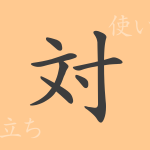The meaning and form of each Kanji character represent more than just a collection of strokes. Deeply rooted in the daily lives of Japanese people, understanding the origin and usage of Kanji opens a window to the cultural and historical backdrop of the language. This article focuses on the Kanji “太” (tai), exploring its allure from its origins to its modern applications.
Origins of “太” (tai)
The Kanji “太” can trace its roots back to ancient Chinese oracle bone script. Originally depicted as an ideogram representing a large person, it is also said to have illustrated the sun rising over the horizon. Over time, its form has simplified, evolving into the current “太”. This character fundamentally denotes size and strength, forming the core of many words.
Meaning and Usage of “太” (tai)
“太” primarily conveys meanings such as “large”, “very”, or “extremely”, indicating that something is above standard in size or degree. It is also used to emphasize significance or intensity. Common in everyday language, it appears in words like “overweight” (太りすぎ) and “sun” (太陽).
Readings, Stroke Count, and Radical of “太” (tai)
The Kanji “太” provides a wealth of information through its readings and stroke structure:
- Readings: On’yomi “タイ” (tai), Kun’yomi “ふと” (futo), “ふとる” (futoru), “ふとい” (futoi)
- Stroke Count: 4 strokes
- Radical: 大部 (daibu) which relates to the concept of ‘large’
Phrases, Proverbs, and Idioms Using “太” (tai) and Their Meanings
There are numerous phrases and idioms that include “太”, each carrying unique meanings and nuances. For example, “太平洋” (Pacific Ocean) represents a peaceful ocean, “太鼓判” (taiko ban) symbolizes absolute assurance or strong approval. “太刀打ちできない” (unable to compete) expresses the inability to match an opponent, and “太陽のような笑顔” (a smile like the sun) describes a bright and warm smile.
Summary on “太” (tai)
The Kanji “太” plays a crucial role in Japanese language as a symbol of size, strength, and importance. Its simple yet powerful strokes significantly impact the meanings of words, and it continues to thrive through various idioms and phrases. Through this single character, we can appreciate the depth of the Japanese language and the cultural significance behind its words.

























